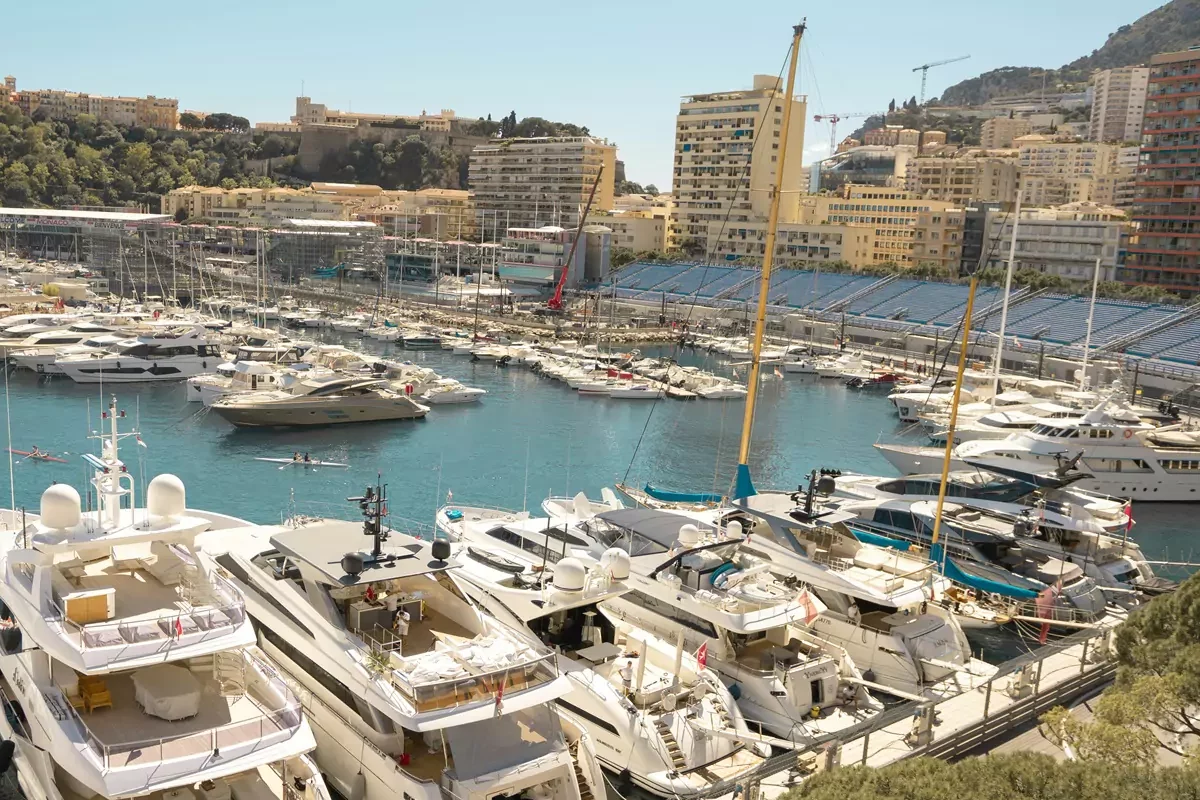Monaco’s latest foreign trade indicators present something of a mixed message. Overall, foreign trade grew by 5.4% in 2023, coming within touching distance of the record totals set down in 2019, but the trade deficit also widened significantly as overseas exports declined and imports rose.
The Institut Monégasque de la Statistique et des Etudes Economiques (IMSEE) recently released its 2023 Foreign Trade Observatory report, which delves into the data and trends of the past year, excluding the Principality’s relationship with its closest neighbour of France.
“The Principality of Monaco is obviously affected by the global economic context, but its growth trends are not exactly in line with international dynamics,” reads the introduction to the report, referencing a World Trade Organistion projection that, globally, foreign trade is expected to grow at a stable rate of 2.6% in 2024.
The most recent data from Monaco suggests that the Principality will exceed this modest pace of growth. In 2023, overall foreign trade grew by a full 5.4% to reach almost €3.7 billion.
A closer look
Imports experienced something of a boom in 2023, climbing by more than 11% to €2.4 billion, which is the second highest amount ever recorded in the Principality after a record €2.55 in 2019.
The primary imports were in the Other manufacturing category, which includes products such as jewellery, perfumes, cosmetics, chemical and pharmaceutical products.
“Purchases of these products rose by more than 19% and their share of the total reached 45.9%,” confirms the report. “They are followed by products from the: Manufacture of electrical, computer and electronic equipment; Manufacture of machinery, with 21.2% of imports, and those from the Manufacture of transport equipment (16.4%).”
Incidentally, the Other manufacturing category is also Monaco’s principal export, particularly regarding the sale of jewellery, bijouterie and musical instruments.
“Although [these exports] fell by around 20% between 2022 and 2023, they still account for almost half of exports at 48%,” continues the report.
Among the other main exports are: the Manufacture of electrical, computer and electronic equipment and manufacture of machinery (17.7%); the Manufacture of food, beverages and tobacco (14.3%); and the Manufacture of transport equipment (10.9%).
This latter category increased its volume of exports by more than half in 2023.
The Manufacture of jewellery, bijouterie and musical instruments category recorded the most significant drop in exports.
Trade deficit grows
With exports falling by 4.6% against the healthy 11% growth noted by imports, “the gap between these two indicators widened [and] the trade deficit increased by almost 35%”.
According to IMSEE statisticians, “This mathematically widens the trade deficit by more than €300 million.”
Who are the Principality’s main trade partners?
According to the IMSEE report, “Europe continues to dominate with an overall volume of trade worth €2.8 billion, accounting for more than three out of four transactions in terms of value.”
Then comes Asia, which has a 11.5% share of overall trade, followed by the Americas and Africa, with 6% and 4.6% respectively. The share belonging to the Near and Middle East contracted in 2023 to 1.4%.
Sales to European countries actually fell by 5.6% last year while imports grew by a small 0.9%.
Outside of France, Italy remains the Principality’s main customer and supplier, receiving €228 million in exports or close to 20% of the total, and sending more than €540 million of goods, a 22% share of total imports.
Completing the Top 5 for exports are Germany, Switzerland, Spain and the United Kingdom. Sales to the UK fell dramatically in 2023, by more than €50 million, but imports increased by a massive 33.7%, making the country Monaco’s second biggest supplier in terms of imports.
15 of Monaco’s Top 20 customers are European nations, a term that includes non-EU member states. The remaining five are the United States of America, Hong Kong, Tunisia, China and the United Arab Emirates.
Monaco’s main import partners, following Italy and the UK in first and second place, are Germany (9.4% share), China (6.9%), Switzerland (5.2%) and the USA (4.8%). Half of the Principality’s chief suppliers are, however, non-European. This group includes the likes of Tunisia, Malayasia, Vietnam, Hong Kong, Taiwan, Japan, Egypt and Lebanon.
A decade of growth
As a complement to IMSEE’s comprehensive review of foreign trade in Monaco, a section of the report is dedicated to the Principality’s “decennial evolution of economic indicators”.
Revenues in Monaco exceeded €20 billion last year; a record amount for the Principality and an increase of 5.5% – more than €1 billion – on the figures recorded in 2022.
See more: Economy: Revenues exceed €20 billion for the first time in Monaco
Though Monaco’s gross domestic product in 2023 won’t be confirmed until November, a further rise on 2022’s figures, which totalled €8.34 billion, is projected.
Over the past decade, Monaco’s GDP has grown by around 50%, with an average annual increase of 4.6%, according to IMSEE. The growth recorded between 2021 and 2022 was a huge 11.1%.
During the same time period, imports more than doubled, with a growth rate of 120.6%, while exports experienced a more gentle progression of 11.1%.
Read more:
Join the Monaco Life community – sign up for the Monaco Life newsletter, follow our Podcasts on Spotify, and check us out on Threads, Facebook, Instagram, LinkedIn and Tik Tok.
Photo source: JK, Unsplash
